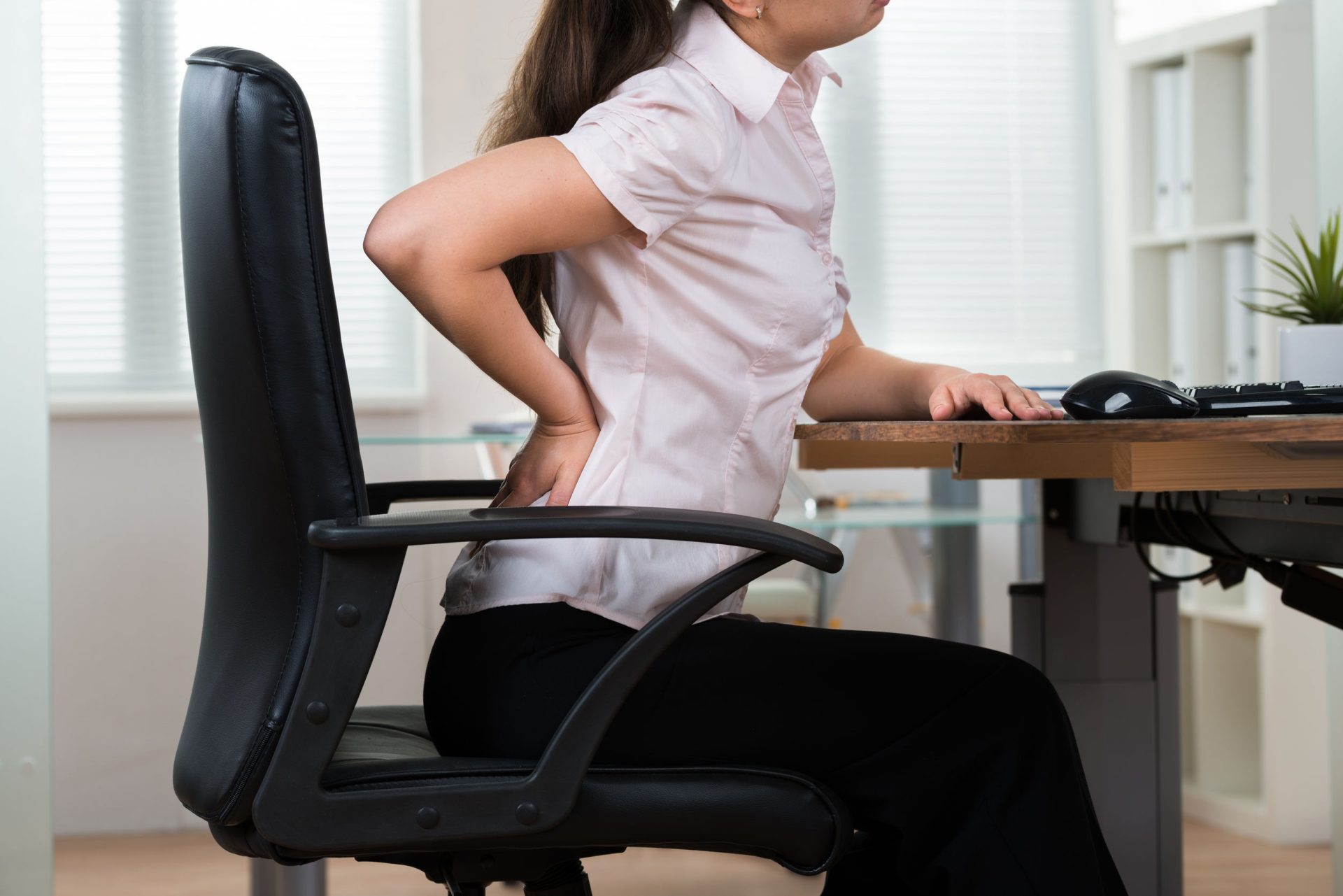Why Is Sitting up Straight Uncomfortable?

Many of us think that we need to sit upright to avoid the neck to hips pain that can result from poor posture.
However, sitting upright at a ninety-degree angle can cause discomfort from trying to straighten out the natural curvature of your back.
Let’s find out how to straighten your back and why is sitting up straight uncomfortable in this article of FittingChairs.
Why is sitting up straight uncomfortable?

There are a few explanations for why is sitting up straight uncomfortable.
The first reason why is sitting up straight uncomfortable is that our muscles like to be at rest, rather than exerting energy.
In most cases, relaxed position leads to a slumped form. You start out sitting upright, but as soon as you are distracted, your shoulders start to relax, move forward, and you end up hunched over your desk.
This can be exacerbated by the poor positioning of your computer or your desk. If the item isn’t at the right level, you’ll find that you automatically try to put your head closer to it, and this can lead to issues where you are scrunched up.
Another reason why is sitting up straight uncomfortable is that the spine has natural or normal anatomical curves in the first place.
When you aim at sitting up straight, it means that you must straighten the spine perfectly. However, since the spine normally curves inward and outward at specific points in the vertebrae, sitting up straight will be next to impossible.
Difficulties in maintaining an erect position while sitting lie on the condition of the supportive structures in the shoulders and back.
For instance, a tight pectoralis muscles on the chest will allow the shoulders to drop. Tight back muscles will make it hard for the back to support the weight of the head and neck when sitting, leading to a slouched position.
Since people never really care about their posture when sitting, all of these conditions get worse, making it harder to sit up straight because you are stuck in that poor posture most of the time.
Is sitting up straight good for you?

Many people believe that we need to master on how to sit up straight in order to have a healthy back and avoid back issues.
Indeed, it seems that there is a minimal connection between poor sitting posture and back issues developing. However, once you have developed back issues, sitting for long periods of time can exacerbate the problem.
In recent years, it has been shown that sitting at a ninety-degree angle is actually potentially dangerous.
If you place weight-bearing strain on your spinal disks, this can cause movement and eventually lead to misalignment should the disk be put under too much pressure.
A study found that the movement of the spinal disk was most significant when the participant sat at a ninety-degree angle. This put more strain on the participant’s back and made an injury more likely.
So far, there isn’t much research prove that sitting straight can actually help to reduce back pain or the risk of developing back problems. Indeed, it may make them worse.
What is good posture when it comes to sitting?

The spine is naturally curved, and how much sitting straight corrects this curve depends on individual interpretation.
It is often said that alignment is more important than position.
If your neck is positioned above your shoulders and you are not slumped forward or backward from your hips, you may find the position more comfortable.
Trying too hard to correct your posture could also lead to more problems than solving it.
Overall, it seems that the best posture involves trying to make sure no parts of your body are significantly out of line with other parts.
There is no consensus about the overall best posture, so try different things and determine which feels the most comfortable to you, while reducing any stiffness you experience.
How to reduce your risk of back pain?
Lifting heavy objects is not the only thing that can cause back pain. There are some risks you can’t control, such as your age and family health history.

Here are what to do to reduce your risks of back pain:
Lose weight
Overweight people have a higher chance of getting back pain. This is mainly true for people with extra weight around the waist.
Keeping a healthy weight through diet and exercise doesn’t only reduce existing back pain, but also helps prevent certain types of back problems in the future.
Increase activity
If you don’t exercise, you’re less flexible and you have weaker muscles. This can cause or worsen back pain.
Take part in a regular exercise program to help heal existing back problems and prevent future ones.
Ease stress
Most people who are stressed tend to sleep poorly, have a poor diet, and get little exercise.
If stress-related muscle tightness appears during this time, back problems can result.
To reduce stress, do relaxation and breathing exercises. Remember to make time to exercise.
Keep good posture
Keeping back straight or in an awkward position for long periods can put you at risk for back pain.
Make sure you have correct back support to reduce your risk of back pain.
Benefits of better posture

Posture is the way your body is positioned when you’re standing, sitting, or lying down. Correct posture puts the least amount of strain on your muscles and joints. It’s essential to apply how to improve posture while sitting.
Poor posture can cause muscle tension, as well as back pain, joint pain, and reduced circulation. This can even lead to breathing issues and fatigue.
The benefits of good posture include:
- Improved balance
- Less back pain
- Lower risk of injury
- Less fatigue
- Fewer headaches
- Improved breathing
- Better circulation
We often get so caught up in what we’re doing that we forget to check our posture.
Make it a habit to check on your posture throughout the day.
Notice how you’re standing, sitting, or walking. Make corrections whenever you find yourself slouching or hunching your back or shoulders, or pushing your head or neck forward to look at a screen.
See more:
Now you know why is sitting up straight uncomfortable. It’s important to keep a good posture to reduce risks of back pains. Don’t forget to come back to FittingChairs for more helpful information.






